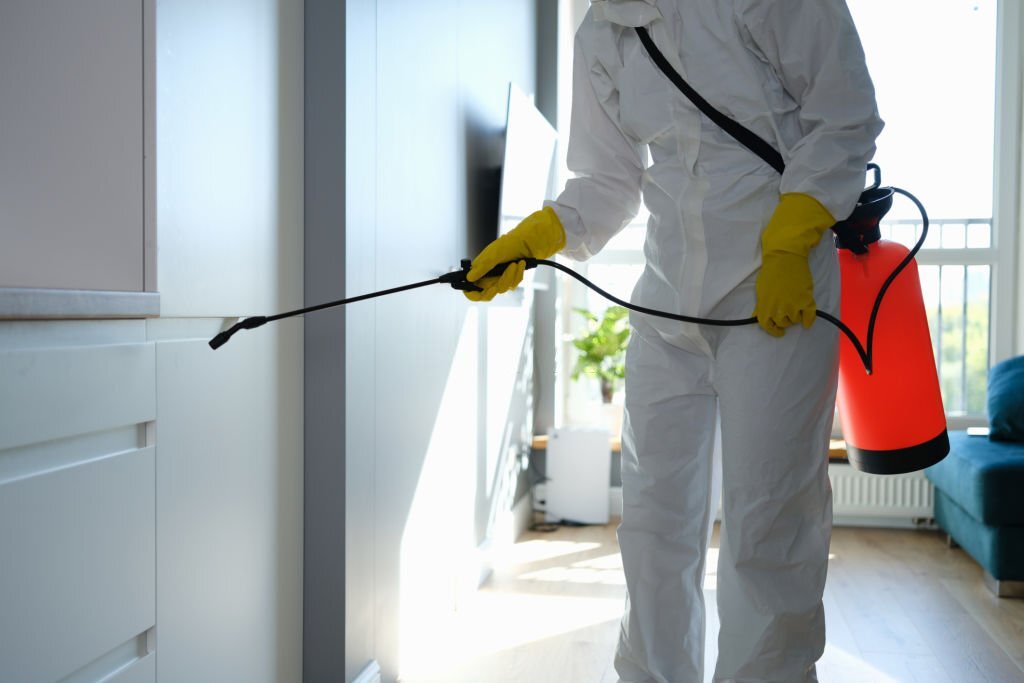
Mold is a bothersome home issue that looks simple at first but can quickly become a serious and even life-threatening situation. The growing substance seems to favour vertical surfaces like walls and ceilings, and unless it is stopped, it will continue to spread and weaken the material. Saving money and avoiding further complications can be achieved by simply being aware of them, cleaning mould off ceiling and using them correctly.
A wide variety of fungi, collectively known as “mould,” thrive on organic matter and water in humid environments. Mold growth is most common in damp, poorly ventilated areas of the home, such as the bathroom, kitchen, garage, and window frames. So always choose best way to clean mould off ceiling in order to get rid of them.
Even though mould is necessary for the biodegradation of organisms in nature, it can be harmful to humans in closed spaces. Toxic spores are released by the fungus and can be inhaled without detection. Mold exposure has been linked to a variety of health issues, including but not limited to chronic headaches, allergies, and respiratory problems like asthma. So, it becomes necessary to cleaning black mould off ceiling to stay safe from such hazards.
The presence of mould on ceilings is a symptom of moisture problems, such as those produced by roof leaks, high humidity, poor ventilation, condensation, and the like. Once mould begins to grow, it will spread rapidly—much more rapidly than it would in nature. If you see any black or greenish stains on the ceiling, respond swiftly to prevent additional contamination.
Health effects from mould exposure can vary depending on the species. Brown or green mould may induce minor symptoms such as skin irritation, sneezing, and so on. In contrast, black mould is extremely dangerous to human health. Its unique characteristics make it easy to see, but only trained experts should attempt eradication.
The presence of mould on ceilings is a symptom of moisture problems, such as those produced by roof leaks, high humidity, poor ventilation, condensation, and the like. Once mould begins to grow, it will spread rapidly—much more rapidly than it would in nature. If you see any black or greenish stains on the ceiling, respond swiftly to prevent additional contamination.
Health effects from mould exposure can vary depending on the species. Brown or green mould may induce minor symptoms such as skin irritation, sneezing, and so on. In contrast, black mould is extremely dangerous to human health. Its unique characteristics make it easy to see, but only trained experts should attempt eradication.
Spot cleaning mould from a ceiling is a laborious task that requires determination. When it comes to cleaning, one and done seldom cuts it. Having the proper tools at your disposal is just as important as having the proper supplies and choose best ways to clean mould off ceiling.
 Latex-free gloves
Latex-free gloves Mask
Mask Sponge
Sponge Protective eyewear
Protective eyewear Can of spray paint
Can of spray paint Can of water
Can of waterIf the mould on the ceiling isn’t treated at its source, your efforts to remove it will be in vain. Mold doesn’t appear for no cause, so check the roof for leaks and other damage.
If the mould has spread onto the wall, it may be because of a leaking pipe. It’s possible that mould could continue to develop undetected inside your walls. You should consult a professional immediately if you think that might be the case with the discoloured spots.
Putting on the gear prepares you for action. Different strategies exist for , cleaning mould off ceiling, but we’ve narrowed it down to the most reliable options.


Clean mould off can be difficult, therefore you may need to carry out these steps more than once. The mould will keep returning months, sometimes days, later unless the source of the problem is eliminated.
Thus, it is essential that you pay close attention to the freshly cleaned area. The resurgence of the fungi can be prevented by regular inspections. The old paint can be removed and replaced with new. You should try to find a paint that is either anti-mould or mold-resistant this time around. Be in touch with professionals like Emergency Flood Damage Restoration Brisbane, who are experts in eliminating the moulds from your home.